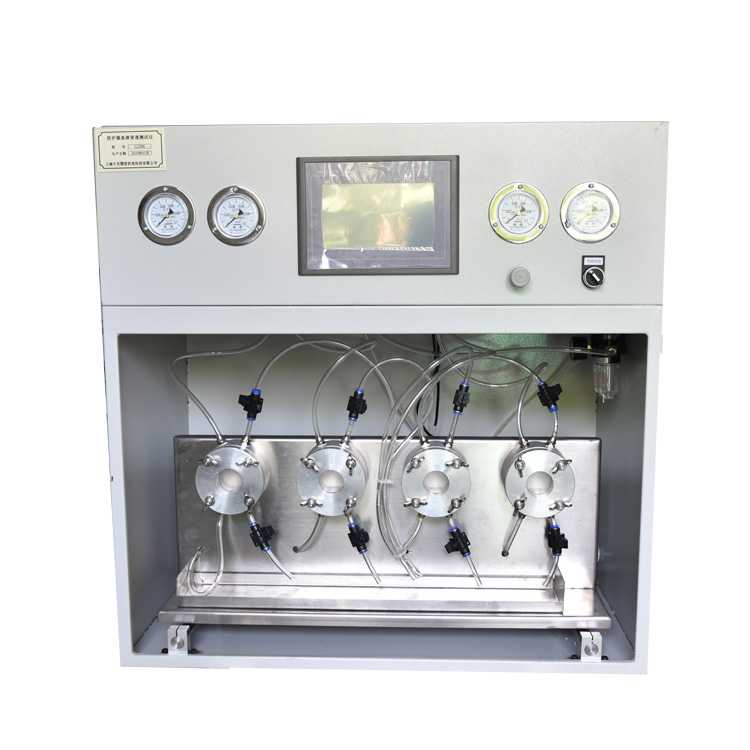The protective clothing blood penetration tester is suitable for measuring the resistance of protective clothing, surgical gowns, isolation gowns, and daily work clothes to synthetic blood penetration under different levels of test pressure. It is widely used in polymer material manufacturers, printing and dyeing industrial enterprises, and textiles. Inspection departments, scientific research units, textile colleges, medical equipment inspection institutes, etc.

Technical index:
1. The instrument uses an air source that can provide (0.5~30±0.1) kPa air pressure to continuously pressurize the sample without being restricted by the space of the test site;
2, the air pressure range can be adjusted freely, the adjustment range (0.5~30) kPa;
3, color touch screen display and operation;
4. The sample holding backing plate is made of imported special aluminum profiles, which are light in material, smooth in surface, and *rusty;
5. The instrument adopts imported special aluminum wire drawing panel, equipped with metal buttons, which is sensitive in operation and not easy to damage;
6. The instrument sample holding device is equipped with locking protection to prevent synthetic blood from splashing around;
7. The clamping force is accurate and reliable, equipped with high-precision special tools;
8. The test tank is equipped with a special placement device, which is convenient for customers to operate;
9. The test tank is made of special 316 stainless steel, and the top is equipped with a special cover for high transparent protection;
10. The gasket under the sample is specially processed with high-quality PTFE material;
11. Square metal blocking net: open space ≥50%; bending ≤5mm under 30kPa;
12. The time control accuracy of the instrument is less than or equal to 01 seconds;
13. The outer shell of the instrument is made of high-quality metal baking paint, which is beautiful and generous;
14. Equipped with a printer interface, you can directly print data reports when connected to the printer.
The main parameters:
1. Use an air source that can provide (20±1)kPa air pressure to continuously pressurize the sample without being restricted by the space of the test site;
2. With a pressure gauge to display the pressurizing pressure, the pressurizing pressure is adjustable;
3. Use pressurized medium: compressed air;
4. The special stainless steel penetrating test tank ensures that the sample is firmly clamped and prevents the synthetic blood from splashing around;
5. Square metal blocking net: open space ≥50%; bending ≤5mm under 14kPa;
6. Digital display timer, accuracy ±0.01min;
7. Equipped with clamps that can generate 13.5N·M torque.
Applicable standards:
GB 19082-2009 Medical disposable protective clothing technical requirements synthetic blood penetration test method
YY 0700-2008 Blood and body fluid protective equipment, protective clothing material resistance to blood and body fluid penetration performance test synthetic blood test method
ISO 16603:2004 Blood and body fluid protective equipment, protective clothing material resistance to blood and body fluid penetration performance test synthetic blood test method
ASTM F1670, ASTM F1671
For more information, please visit below link:
https://www.qinsun-lab.com/index.html
For more information, please visit below link:
https://www.qinsun-lab.com/index.html
评论
发表评论